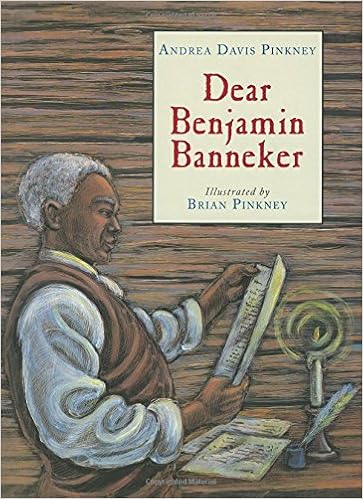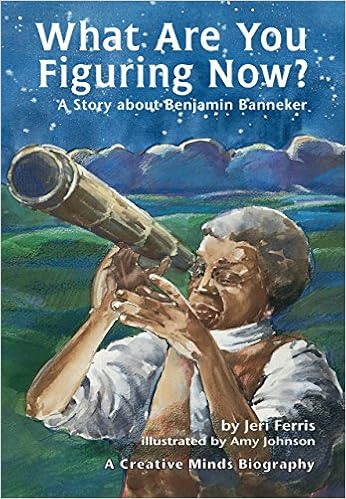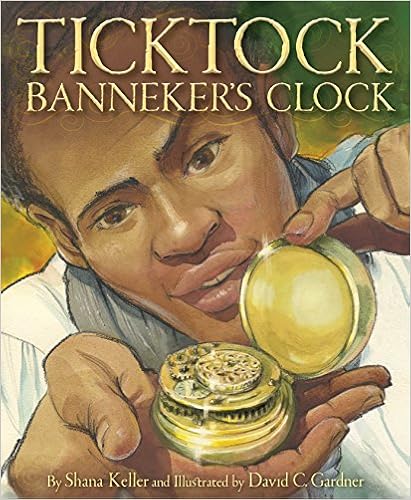FREE Benjamin Banneker Unit Study at 3 Reading Levels
Published:
June 21, 2020

Contributor:
Sarah Shelton
Disclosure: This post may contain affiliate links, meaning if you decide to make a purchase via my links, I may earn a commission at no additional cost to you. See my disclosure for more info.
Benjamin Banneker overcame so much in his life. He was a free African American man, the son of a free woman and his father, a former slave. He didn’t have much of a formal education, yet he still went on to achieve some really amazing things! Let’s learn more about this famous African American scientist with these free printables and resources about him.

Who was Benjamin Banneker?
Benjamin Banneker was an African-American scientist, mathematician and astronomer. He grew up as a farmer with very little education. His grandmother taught him how to read, and he attended a Quaker school for a short time. He was mainly self taught through reading and math.
Benjamin Banneker spent many hours on his farm staring up at the night sky. He became so fascinated by it that he eventually learned to predict lunar and solar eclipses. This all came from what he had learned from his readings and mathematical equations that he formulated on his own!
This genius man came out of a very difficult life and went on to create some great things that we still use today. He was also a strong advocate for human rights and opposing slavery. He even corresponded with Thomas Jefferson regarding absolving slave holding and black rights.
- Read more about the biography of Benjamin Bannker at Biography.com.
- Benjamin Banneker biography for kids – Ducksters
- Learn more about Benjamin Banneker’s life and his inventions at The Black Inventor.
- He was born and raised in Maryland, learn about the place of his birth with this FREE Maryland State History Printable.
Inventions and Discoveries:
- Farmer’s Almanac – he created six Farmer’s Almanacs that predicted the weather, tides, eclipses, seasonal changes, tips on planting crops and home medicine remedies. He also tracked cicadas for over 17 years. His knowledge from growing up on a farm helped him to get started on these almanacs that were very popular and well received when they were published.
- Agriculture – He helped to pioneer crop rotation in farming. His knowledge in farming helped him to grow wheat during the Revolutionary War in barren lands. This crop helped to feed the American soldiers during war.
- Contributed to the anti-slavery movement – he sent a copy of his almanacs to President Thomas Jefferson with a 12 page letter attached. This letter expressed that black people had an equal intellectual ability as white people and that they should have equal rights and opportunities. They corresponded back and forth for two years on the matter.
- Striking Clock – He created the very first wooden clock in America. It was modeled after a pocket watch that was given to him to explore and take apart. This clock striked and chimed on the hour every hour. It kept perfect time for over 20 years.
- Surveyor – his mathematical genius helped him to be able to survey large portions of land and memorize the plans and equations. He was on the survey team that planned the layout for Washington D.C. .
- Solar Eclipse Forecaster – His expertise in astronomy and observing the night sky gave him the ability to predict the solar eclipse of a 1789 ahead of the actual event.
FREE Benjamin Banneker Unit Study
We’ve created free Benjamin Banneker learning packs to help kids of multiple ages learn more about this scientist and his revolutionary work. Use the whole pack as a small unit study of Banneker or grab just a couple of page as a supplement to any homeschool curriculum you may already be using.
The free digital printable pack includes:
- Image Analysis of the scientist and/or his or her work
- Read a Passage about the scientist with a place to take short notes
- 5 Key Vocabulary Words from the passages with definitions as well as opportunity to use the word in a sentence and/or draw an image to help your student learn the word
- Vocabulary Flashcards to use 2 ways: fold and learn or cut apart to use as a memory game
- 3-2-1 Reflection which gives a child the opportunity to write 3 things learned, 2 connections made, and 1 thing he or she would like to learn more about
- 3 Multiple Choice Questions with an opportunity to explain the their answer
- 3 Short Answer Questions
- 3 Reflect and Discuss Questions which can be used for personal reflection or to discuss as a family, homeschool co-op or classs.
And because we know that homeschool families may want to learn about the history of Banneker’s life and work together, we’ve also designed it at 3 different reading levels:
- Level 1 = Approximately Grade 3 reading level
- Level 2 = Approximately Grade 6 reading level
- Level 3 = Approximately Grade 9 reading level
Grab your copy of one or all three reading levels below today!
FREE Benjamin Banneker Unit Studies:
Banneker Learning Pack
Level 1
Banneker Learning Pack
Level 2
Banneker Learning Pack
Level 3
More Printables and Resources About Benjamin Banneker:
We’ve also searched the internet to compile a HSG FREE Resource Roundup list for you to give you even more choices. If you want additional homeschool resources to learn more about Benjamin then check out these options:
- Power Point Presentation on Benjamin Banneker
- Benjamin Banneker’s Career Lesson Plan and Video – Study.com
- African American Inventors Freebie (includes Benjamin Banneker) – Little School on the Range
- Friends of Benjamin Banneker is a website that is ran by the Benjamin Banneker Historical Park and Museum. You can learn about the history of Banneker, view a timeline of his life, and his inventions and accomplishments.
- Benjamin Banneker Timeline Worksheet – Write Bonnie Rose
- The Black Tobacco Farmer the Presidents Couldn’t Ignore – Lesson from White House History
- Benjamin Banneker’s Prime Observation – Houghton Mifflin Harcourt
- Who is Benjamin Bannker? Who Invented the Clock? – Empower Your Knowledge and Happy Trivia
- Benjamin Banneker Printable – TPT
- The Exceptional Life of Benjamin Banneker Lesson and Video – Ted Ed
Books about Benjamin Banneker
These are some great books to learn more about Benjamin Banneker, his life and accomplishments available on Amazon. However, if you are looking for free copies then be sure to check your local library:
 Dear Benjamin Banneker |
 What Are You Figuring Now?: A Story about Benjamin Banneker |
 Tick Tock Banneker’s Clock |
 Benjamin Banneker: Pioneering Scientist |
Paid Resource: Famous People Notebook: Scientists
Daily Skill Building has created an open-and-go notebooking study called Famous People Notebook: Scientists to explore the life and work of 10 scientists that changed history. This biographical unit studies include text, comprehension questions, written narration, and answers. If you are looking for one book your older students can use to independently explore multiple scientists, then this is a great option!

What to Explore More Famous Scientists?
This is part 8 of our 12 post series on famous scientists. If you would like to add even more scientists into your lesson plans then be sure to go to our Louis Pasteur unit study below to get another free pack.
You Might Also Like…
FREEBIE?
We have 3 different reading levels of a FREE Benjamin Banneker Unit Study available for you to download. Scroll back up if you missed them.









